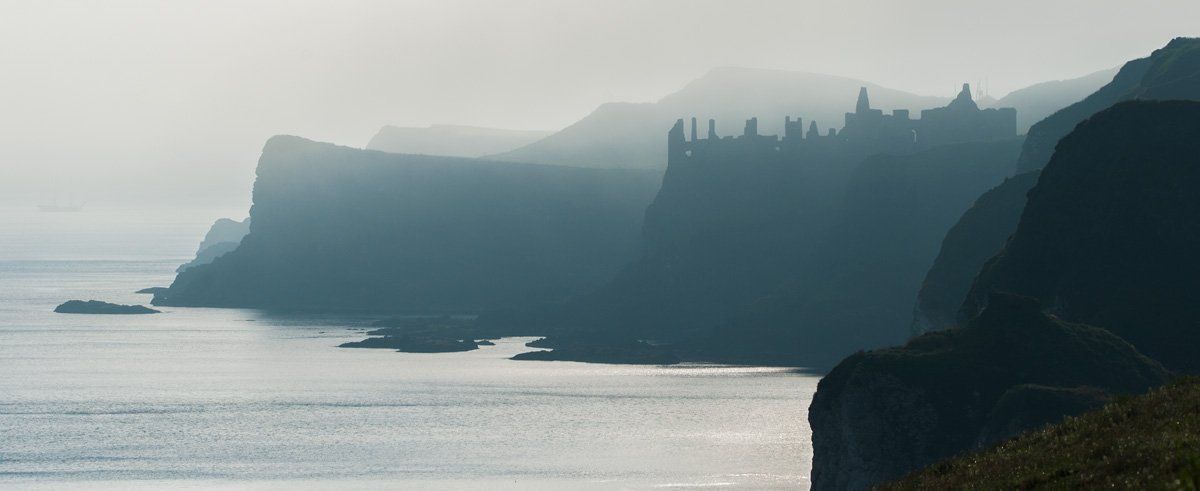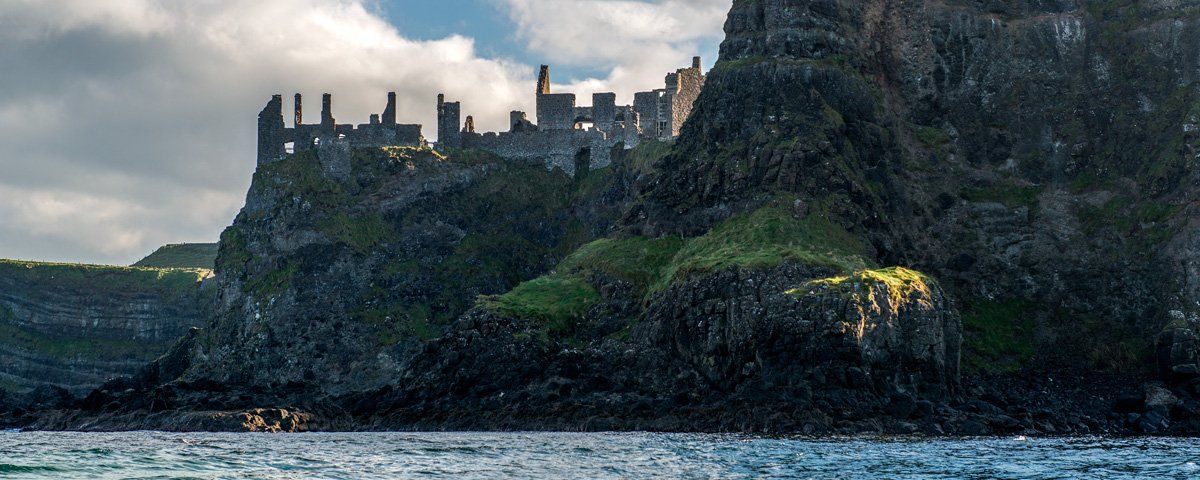About Dunluce
About Dunluce
Dunluce fell into disrepair after the last resident, Randall McDonnell, the second Earl of Antrim moved to Ballymagarry House in the late 1600s. In 1745, Ballymagarry House was destroyed by fire and the seat of the Earl of Antrim moved to its present location at Glenarm Castle. Nearby are the ancient ruins of St. Cuthbert's named after a Northumbrian monk, it is also the burial site of sailors and noblemen from the Spanish Armada. On a clear day, you can look out over an expanse of ocean to Donegal and round to the Scottish Isles. It was within this vista that the tragedy of the emigrant ship the 'Exmouth'
took place in April, 1857, bound for Quebec, she spent three days in horrendous sea conditions before finally breaking up on rocks off Islay with the loss of 240 lives.
The castle was built on the foundations of an older fort in the 13th century during the Anglo-Norman period in Ulster, The site was certainly occupied before the erection of a stone fortress as is evident by the souterrain which today runs under one of the Norman towers. Names that have been associated with ownership of the include Mac Eoin (Bissett), De Courcy, De Burgh, MacQuillan and MacDonnell with several brief captures and occupation by other English and Scottish forces including Sir John Perrott and General Munro.
The most colourful occupier of Dunluce Castle was Sorley Boy MacDonnell, a Scottish chieftain whose clan established their dominance along the north coast in the mid-1500s. The castle was lay siege to on several occasions during its long history, three examples were: 1584 - Queen Elizabeth dispatched Sir John Perrott (the Lord Deputy of Ireland) from Dublin with an army to arrest Sorley Boy MacDonnell - he lay siege to Dunluce on September 14th 1584 and on the third day the castle surrendered - Sorley had flown the nest before his arrival and evaded arrest. The castle was held by Perrott for one year, Sorley re-took it on his departure.
1641 - It was unsuccessfully besieged by an Irish army - the village of Dunluce was destroyed by fire but the castle held out under the command of a Captain Digby and was relieved by the Earl of Antrim. The outline of walls of this village can still be seen in the land to the west of the castle and recent excavations have provided interesting finds. A plan exists to create a new visitors centre and excavate the area for public access. 1642 - In July, General Munro arrived with one thousand foot soldiers, two troops of cavalry and field guns on his mission to crush the uprising. Acting under the orders of the Marquis of Argyll (an enemy of the Earl) he arrested and imprisoned the Earl of Antrim in Carrickfergus Castle, he also ransacked Dunluce and other castles belonging to the Earl.
All Rights Reserved | Art Ward
© 2024




